My dad and my grandfathers smoked a lot of cigars and pipe tobacco during my youth, so tobacco artwork was something I noticed as a kid, especially because I stored my many small treasures in their empty cigar boxes. Over the years I have seen a number of articles highlighting album jacket art that depicts folks smoking, but my interest, due to all those cigar boxes I saw as a child, lies in album art that mimics cigar box and other tobacco related advertising. Here is my mini tribute through record albums with such artwork. Although I have most of the albums pictured, the last couple I do not have (yet) but felt they are important enough to include in this article. And you can bet there are many more out there. I have accumulated those shown over a number of decades, not usually seeking them out, but buying them when I did run across one at a thrift store, estate sale, or on rare instances a used record store.
Tobacco advertising has slowly made its way out of American culture due to the now known harmful side effects, but it was once prevalent in all media, from candy cigarettes to paperback inserts to magazine and newspaper advertising to the silver screen. Congress banned tobacco advertising on television in January 1971, with the last televised cigarette ad running at 11:50 pm during The Tonight Show, starring Johnny Carson, on January 1, 1971. After 1971, most tobacco advertising was done in magazines, newspapers, and billboards. In November 2003, tobacco companies and magazine publishers agreed to stop the placement of ads in school library editions of Time, Sports Illustrated, Newsweek, and People.
The Tobacco Master Settlement Agreement, passed in 1997, banned outdoor, billboard, and public transportation advertising of cigarettes in most states. It also prohibits tobacco advertising that targets young people, especially through cartoons. In 2010, the Tobacco Control Act became active and placed new restrictions on tobacco marketing, including extensive constraints concerning the circulation of cigarettes and smokeless tobacco to minors.

I think the first tobacco-themed album cover that caught my attention was Chuck Mangione’s 1975 Bellavia album, with its shiny silver and bronze accents. This album cover begs to be on the inside top of a cigar box. Some called this his best album; others said it appeared to be rushed. I just collect it for the striking album art so I don’t care, but the music is very good.


Featured here are others in my ever-expanding collection, ever-expanding as long as I live and breathe and frequent thrift stores. In fact, the sealed Tompall  Glasser and his Outlaw Band album was purchased just last week. While I can’t say for a fact that tobacco advertising inspired this jacket art, I can say that I thought of cigar box graphics the moment I spotted this cover. So while it is not my “favorite” tobacco related cover, it is the most recent acquisition. If you have seen a lot of tobacco advertising, you have to admit that Tompall’s picture on the front cover is reminiscent of the Dutch Masters, and he reminds me a heck of a lot of Sir Walter Raleigh. This album was released in 1977 by ABC Records. The art director was Frank Mulvey, with photography by Melinda Wickman and tinting by Snyder & Butler. I am reminded of childish telephone pranks - Do you have Sir Walter Raleigh in a can?
Glasser and his Outlaw Band album was purchased just last week. While I can’t say for a fact that tobacco advertising inspired this jacket art, I can say that I thought of cigar box graphics the moment I spotted this cover. So while it is not my “favorite” tobacco related cover, it is the most recent acquisition. If you have seen a lot of tobacco advertising, you have to admit that Tompall’s picture on the front cover is reminiscent of the Dutch Masters, and he reminds me a heck of a lot of Sir Walter Raleigh. This album was released in 1977 by ABC Records. The art director was Frank Mulvey, with photography by Melinda Wickman and tinting by Snyder & Butler. I am reminded of childish telephone pranks - Do you have Sir Walter Raleigh in a can?
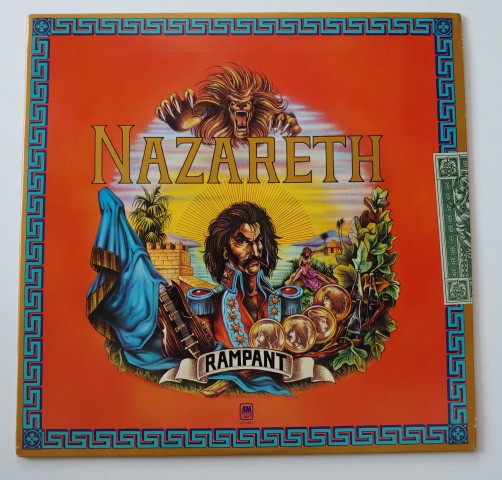 Nazareth’s Rampant, released in 1974 by A&M Records, is one of my favorites – vivid colors, great graphics, and it even uses the “tobacco tax stamp” on the back to inconspicuously list the song titles and credits. This cover sleeve was by Hipgnosis and Joe Petagno III. Hipgnosis was prolific in the 60s, 70s, and 80s, producing fantastic jacket art (like on Pink Floyd’s Dark Side of the Moon, 10cc’s Deceptive Bends, Led Zeppelin’s Houses of the Holy, to name just a few). I highly recommend the book Vinyl Album Cover Art – The Complete Hipgnosis Catalogue, written by Aubrey Powell, published by Thames & Hudson, which shows every Hipgnosis
Nazareth’s Rampant, released in 1974 by A&M Records, is one of my favorites – vivid colors, great graphics, and it even uses the “tobacco tax stamp” on the back to inconspicuously list the song titles and credits. This cover sleeve was by Hipgnosis and Joe Petagno III. Hipgnosis was prolific in the 60s, 70s, and 80s, producing fantastic jacket art (like on Pink Floyd’s Dark Side of the Moon, 10cc’s Deceptive Bends, Led Zeppelin’s Houses of the Holy, to name just a few). I highly recommend the book Vinyl Album Cover Art – The Complete Hipgnosis Catalogue, written by Aubrey Powell, published by Thames & Hudson, which shows every Hipgnosis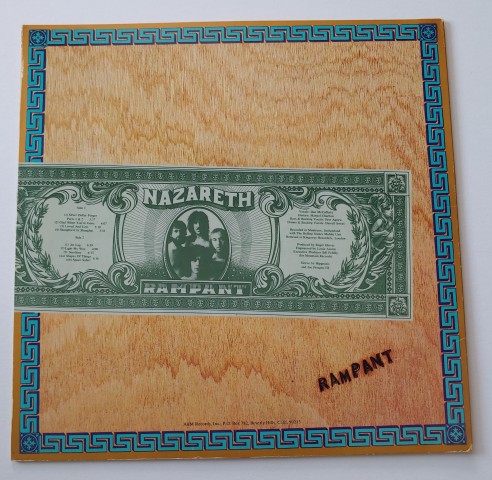 produced jacket art, good and self-admittedly bad. I’m guessing you will find that many of your favorite album jackets were produced by Hipgnosis. My only complaint about the book is that I think it should have been issued in a format larger than its 8 x 9 ½ inch size, as we could all use another great “coffee table” book.
produced jacket art, good and self-admittedly bad. I’m guessing you will find that many of your favorite album jackets were produced by Hipgnosis. My only complaint about the book is that I think it should have been issued in a format larger than its 8 x 9 ½ inch size, as we could all use another great “coffee table” book.
 Another favorite is Praise the Name of Jesus – A Live Expression of Worship in the Outdoors, with worship leaders David & Dale Garratt. I’ve never listened to this record, but was attracted to the album jacket art, designed by Garry Atkinson. This record was released in 1974 by Scripture in Song Records, Ltd.
Another favorite is Praise the Name of Jesus – A Live Expression of Worship in the Outdoors, with worship leaders David & Dale Garratt. I’ve never listened to this record, but was attracted to the album jacket art, designed by Garry Atkinson. This record was released in 1974 by Scripture in Song Records, Ltd.
Jerry Lee Lewis’ Southern Roots / Back Home to Memphis album, released in 1973 by Phonogram, 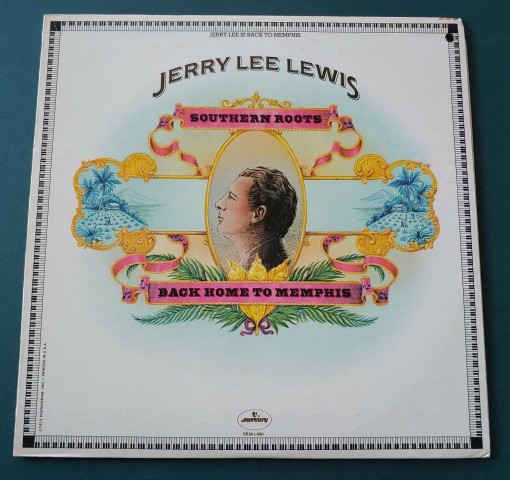 Inc./Mercury Records, also has some great graphics. The design was by Kenneth Kneitel and the illustration by Carol Bouman. It’s interesting to read through the album’s credits, seeing notable musicians such as Steve Cropper (Stax guitar legend), Tony Joe White (Polk Salad Annie), Mark Lindsay (Paul Revere & the Raiders), drummer Al Jackson and guitarist Donald “Duck” Dunn (both of Booker T. & the M.G.’s). It never ceases to amaze me of the star power amassed for a Jerry Lee Lewis record. Ahh, to be in that studio……
Inc./Mercury Records, also has some great graphics. The design was by Kenneth Kneitel and the illustration by Carol Bouman. It’s interesting to read through the album’s credits, seeing notable musicians such as Steve Cropper (Stax guitar legend), Tony Joe White (Polk Salad Annie), Mark Lindsay (Paul Revere & the Raiders), drummer Al Jackson and guitarist Donald “Duck” Dunn (both of Booker T. & the M.G.’s). It never ceases to amaze me of the star power amassed for a Jerry Lee Lewis record. Ahh, to be in that studio……
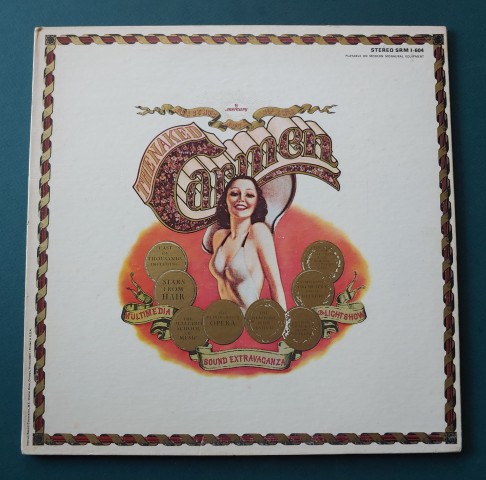 This next one leaves no doubt that it is cigar advertising related – Various Artists – The Naked Carmen, released in 1970 by Mercury Records. This gatefold record has some great graphics inside and out. The back jacket shows a bunch of mock cigar labels, with names like Mary Jane, Hash & Hash, Acapulco Gold, Garcia’s Gonge, Higher & Higher, and Coral Reefer, to name just a few. The gatefold inside has, sadly, a photo of censored naked lady labels on cigars. The censoring is the sad part…..There also is a colorful booklet detailing the history of Carmen.
This next one leaves no doubt that it is cigar advertising related – Various Artists – The Naked Carmen, released in 1970 by Mercury Records. This gatefold record has some great graphics inside and out. The back jacket shows a bunch of mock cigar labels, with names like Mary Jane, Hash & Hash, Acapulco Gold, Garcia’s Gonge, Higher & Higher, and Coral Reefer, to name just a few. The gatefold inside has, sadly, a photo of censored naked lady labels on cigars. The censoring is the sad part…..There also is a colorful booklet detailing the history of Carmen.

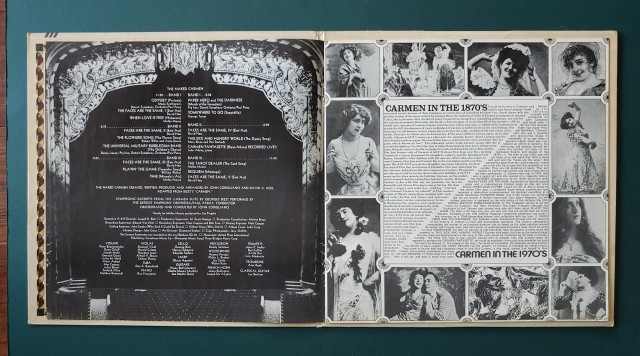

 The Harry Reser album, released by RCA Camden in 1973, features Harry (The Greatest Banjo
The Harry Reser album, released by RCA Camden in 1973, features Harry (The Greatest Banjo  Player of Them All) Reser on a pocket tobacco tin. The record was a re-release of “Banjos Back to Back”. The earlier album did not feature the tobacco tin graphics.
Player of Them All) Reser on a pocket tobacco tin. The record was a re-release of “Banjos Back to Back”. The earlier album did not feature the tobacco tin graphics.
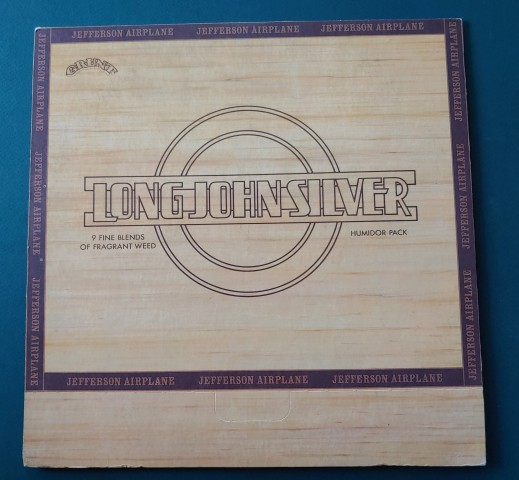 The next two albums are somewhat different than those shown above, but still continue the tobacco theme. Jefferson Airplane’s Long John Silver album, released in 1972 by Grunt Records, went a step beyond in graphic design, with the album actually pressed and cut to form an actual “cigar” box when assembled by the buyer. The graphics tend to illustrate that the cigars more likely contain marijuana, as the front cover notes “9 Fine Blends of Fragrant Weed”, but that’s close enough to tobacco for me. The inside record sleeve continues the cigar theme, with a bed of marijuana printed on the inside jacket cover, which would form the bottom of the box when assembled. My problem with the album concept is a total lack of desire on my part to form the cover into a box, as that requires breaking some serrations and creasing some areas to do so.
The next two albums are somewhat different than those shown above, but still continue the tobacco theme. Jefferson Airplane’s Long John Silver album, released in 1972 by Grunt Records, went a step beyond in graphic design, with the album actually pressed and cut to form an actual “cigar” box when assembled by the buyer. The graphics tend to illustrate that the cigars more likely contain marijuana, as the front cover notes “9 Fine Blends of Fragrant Weed”, but that’s close enough to tobacco for me. The inside record sleeve continues the cigar theme, with a bed of marijuana printed on the inside jacket cover, which would form the bottom of the box when assembled. My problem with the album concept is a total lack of desire on my part to form the cover into a box, as that requires breaking some serrations and creasing some areas to do so.
As a purist, I want my album jacket to remain in pristine condition (or at least in the condition in which I found it). To illustrate my dedication to this article’s readers, I bought a cheaper copy of the album off eBay just so I could form it into a box and show you the finished product. 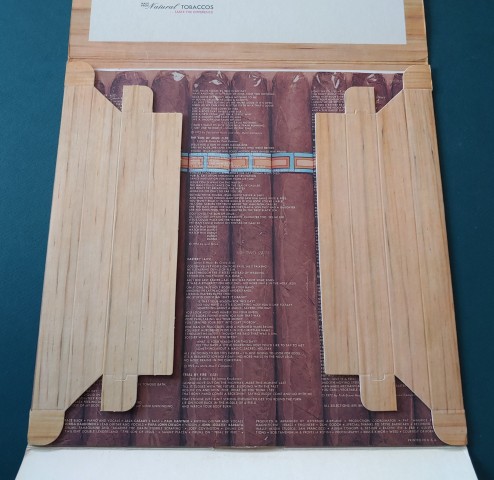 items. The album concept and design is by Pacific Eye & Ear, with illustrations by Bob Tanenbaum and Propella Rotini. Liner notes even credit Borris with the weed.
items. The album concept and design is by Pacific Eye & Ear, with illustrations by Bob Tanenbaum and Propella Rotini. Liner notes even credit Borris with the weed.
Here are a few photos of the completed box. As I noted above, once completed the box loses all usefulness as an album jacket. But I had to see what it would look like fully assembled, and it did not disappoint.
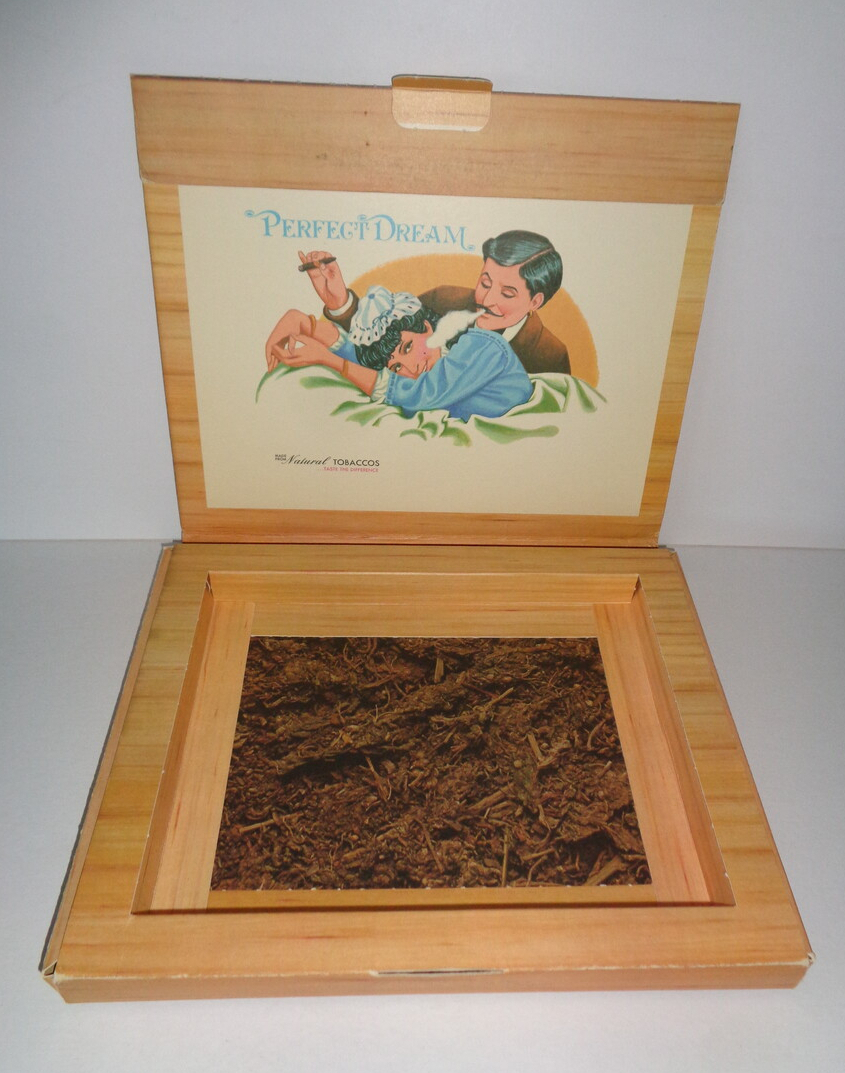
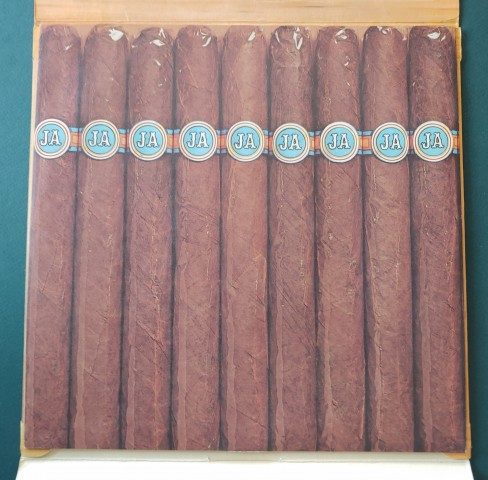

Cheech & Chong’s Big Bambu, released by Ode Records in 1972, is a comedy album by the classic
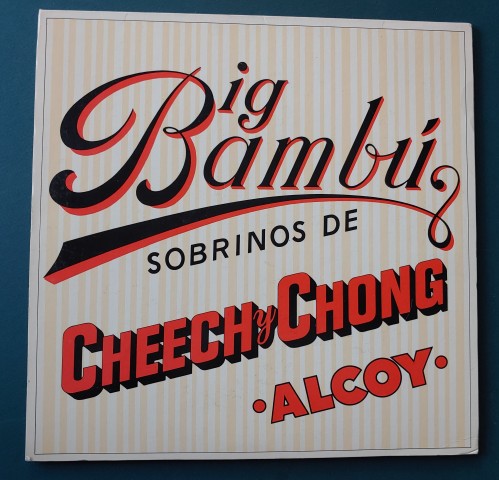 duo, dedicated I suppose to pot smokers everywhere. I was happy to locate a copy with the oversized rolling paper still intact. The album jacket and rolling paper “poster” were created and designed by Wilkes & Braun for Sound Packaging Corp.
duo, dedicated I suppose to pot smokers everywhere. I was happy to locate a copy with the oversized rolling paper still intact. The album jacket and rolling paper “poster” were created and designed by Wilkes & Braun for Sound Packaging Corp.

Another of my recently acquired favorite tobacco-related album is The Small Faces – Ogden’s Nut Gone Flake, designed by Nick Tweddell and Pete Brown, released in 1968 on the Immediate label. This was the first record released in a round jacket, which tended to roll off the shelves and thus was short-lived in that format. I mentioned in another article that I ran across the album jacket in a thrift store in Brockton, Massachusetts, decades ago, without the vinyl. So I passed it up at the time, as a purist only wanting a complete package – the jacket and the vinyl. Such are the memories that linger with us – the missed opportunities to obtain such treasures……But I recently acquired a copy off eBay. The album consists of four attached flaps, with one flap also containing the sleeve in which the album is kept. These are fragile, so repeated opening and closing will wear through the small attached areas quickly. While my copy is still attached, one connection is torn almost completely through. But other than photographing this for you, I don't have a need to unfold it in the future.

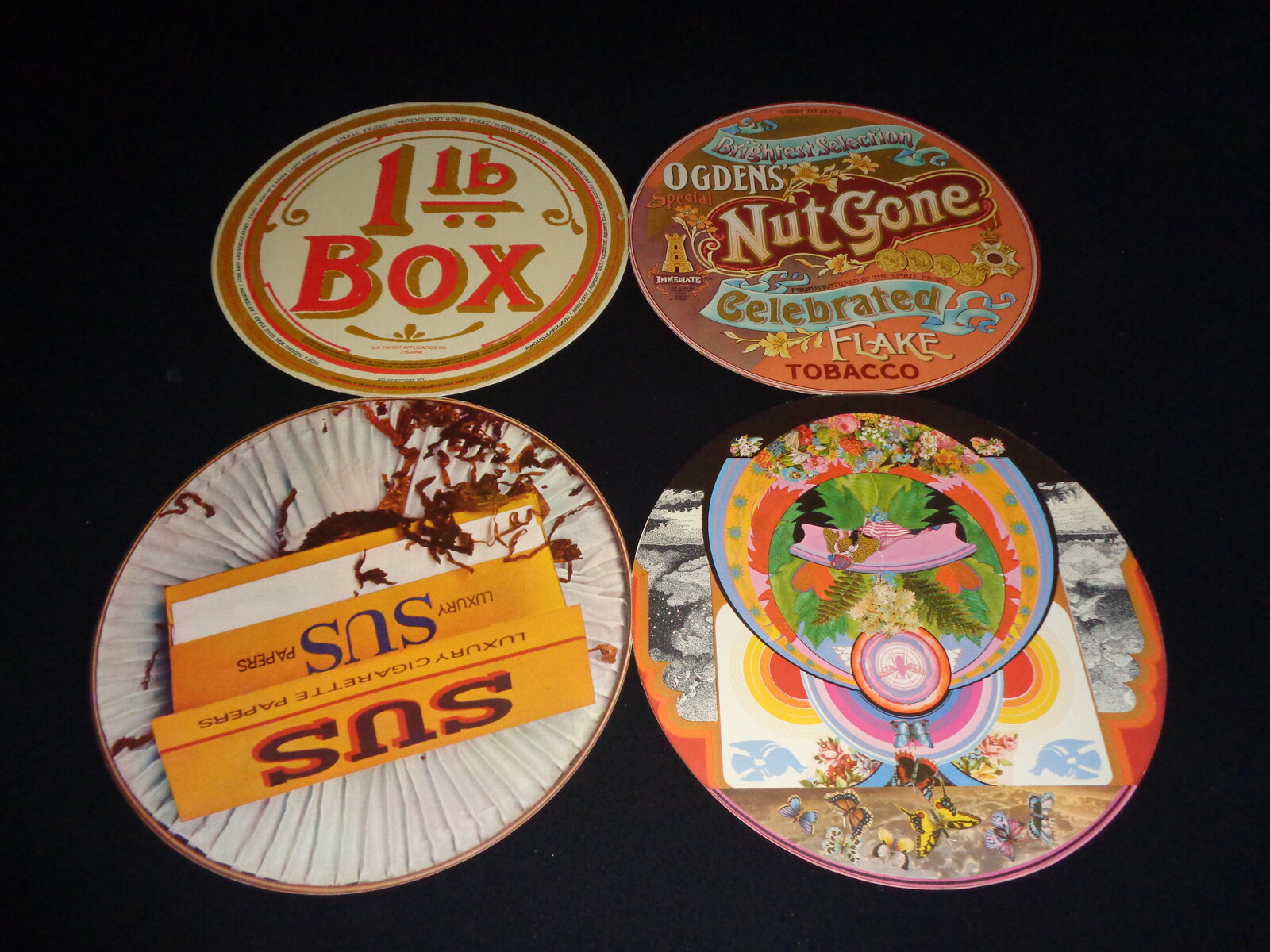

An album I have yet to run across is Camel’s Mirage, released on the Deram label in 1974. You can
look at it and easily see the tobacco tie-in, from the group’s name to the cigarette package jacket art.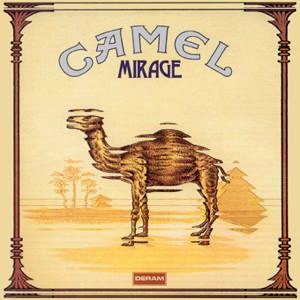
So that’s it for now. Most of the albums pictured can be easily and cheaply obtained off the internet, other than the two I don't have yet. So start your collection today if you are so inclined. Until next time, good luck hunting!

